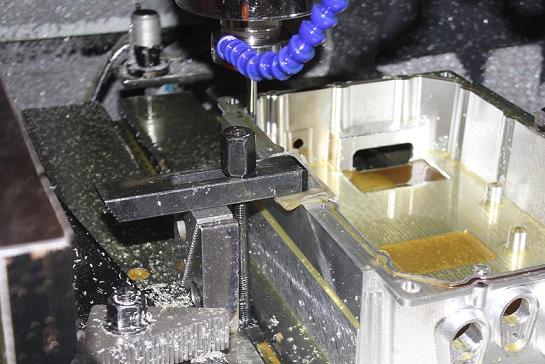Get in touch.
Dear,I will reply in 12 hours. All your message are protected!
Rapid Prototyping Services, Professional manufacturer of CNC Prototyping and 3D Prototyping in China.
CNC (Computer Numerical Control) machining is a precise and versatile manufacturing process used to create various components and parts. A crucial aspect of CNC machining is achieving a smooth surface finish, which enhances both the aesthetics and functionality of the final product. In this article, we will explore the techniques and tips for obtaining a high-quality, smooth surface finish in CNC machining.

1.Material Selection:
Choosing the right material is essential for achieving a smooth surface finish. Some materials, such as aluminum alloys or stainless steel, naturally lend themselves to smoother finishes. Consider the specific application requirements, material properties, and machinability when selecting the ideal material for your project.
2.Tool Selection:
Selecting the appropriate cutting tools is vital for achieving a smooth surface finish. Choose tools with sharp cutting edges and polished surfaces to reduce tool marks and improve surface quality. Carbide or high-speed steel end mills with multiple flutes are commonly used for achieving fine finishes. Consider the tool's geometry, such as the helix angle and rake angle, to optimize chip evacuation and reduce vibrations.
3.Machining Parameters:
Optimizing the machining parameters is crucial for obtaining a smooth surface finish. Adjust the spindle speed, feed rate, and depth of cut to minimize tool vibrations and chatter. Use smaller stepovers or radial engagements to achieve finer surface finishes. Experiment with different parameters to find the optimal balance between cutting efficiency and surface quality.
4.Cutting Strategies:
Employing appropriate cutting strategies can significantly impact the surface finish. Consider using climb milling instead of conventional milling to reduce tool deflection and minimize the formation of tool marks. Implement adaptive toolpaths that dynamically adjust the cutting parameters to maintain a consistent chip load and prevent uneven surface finishes.
5.Toolpath Optimization:
Optimize the toolpaths to ensure smooth transitions and minimize abrupt changes in cutting direction. Use smooth and continuous tool movements to reduce the likelihood of tool marks or surface imperfections. Consider using spiral or trochoidal toolpaths to distribute cutting forces evenly and improve surface finish.
6.Coolant and Lubrication:
Proper coolant and lubrication techniques can help achieve a smoother surface finish. Using coolant or cutting fluids helps dissipate heat, reduce friction, and improve chip evacuation. Ensure that the coolant is properly directed to the cutting zone to prevent heat buildup and maintain consistent performance.
7.Tool Maintenance:
Regularly inspect and maintain the cutting tools to ensure optimal performance and surface finish. Dull or damaged tools can result in poor surface quality and increased tool marks. Sharpen or replace worn-out tools as needed to maintain the desired surface finish.
8.Post-Machining Operations:
After the CNC machining process, perform post-machining operations to further enhance the surface finish. These can include deburring, sanding, polishing, or applying surface treatments like anodizing or plating. Ensure that these operations are performed with precision and care to avoid introducing new defects or imperfections.
Conclusion:
Attaining a smooth surface finish in CNC machining requires careful consideration of material selection, tool selection, machining parameters, cutting strategies, toolpath optimization, coolant and lubrication, tool maintenance, and post-machining operations.
© 2005-2025 Shenzhen Tuowei Model Technologies Co., Ltd. | All Rights Reserved 粤ICP备11096697号